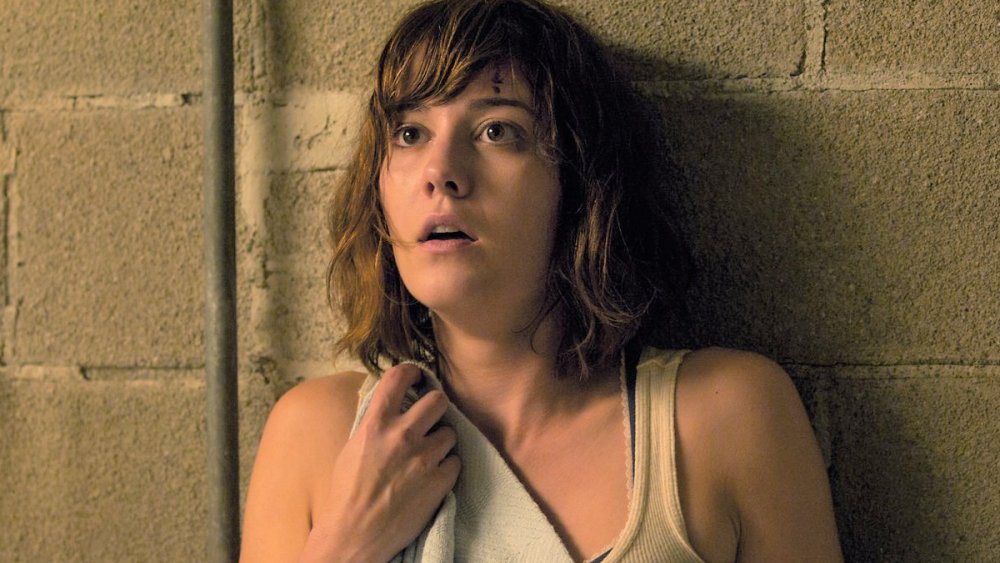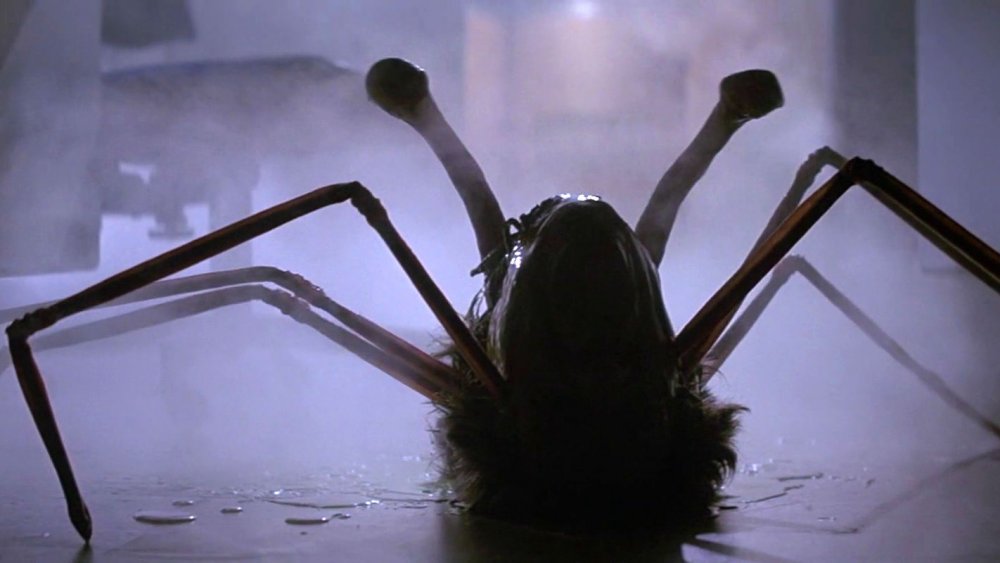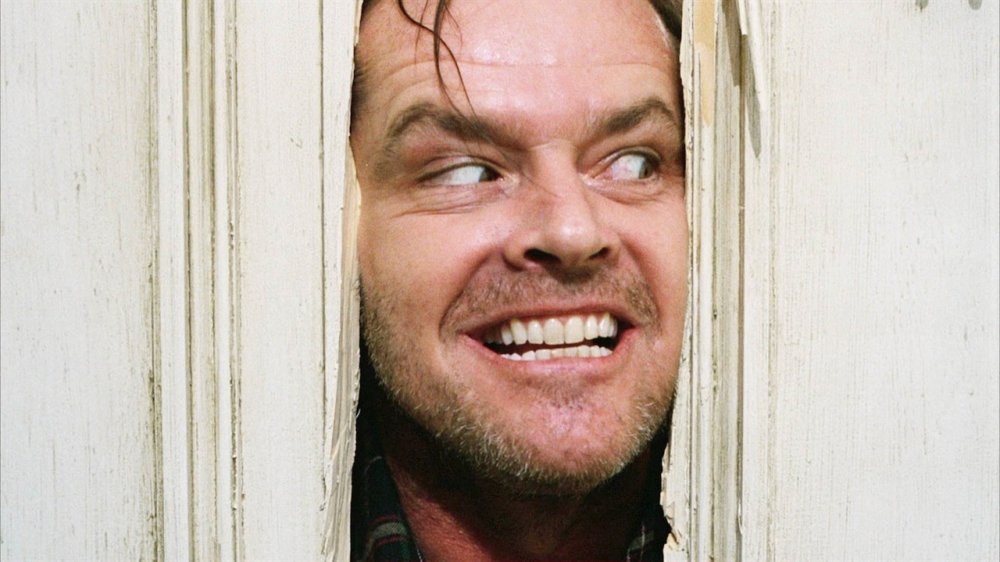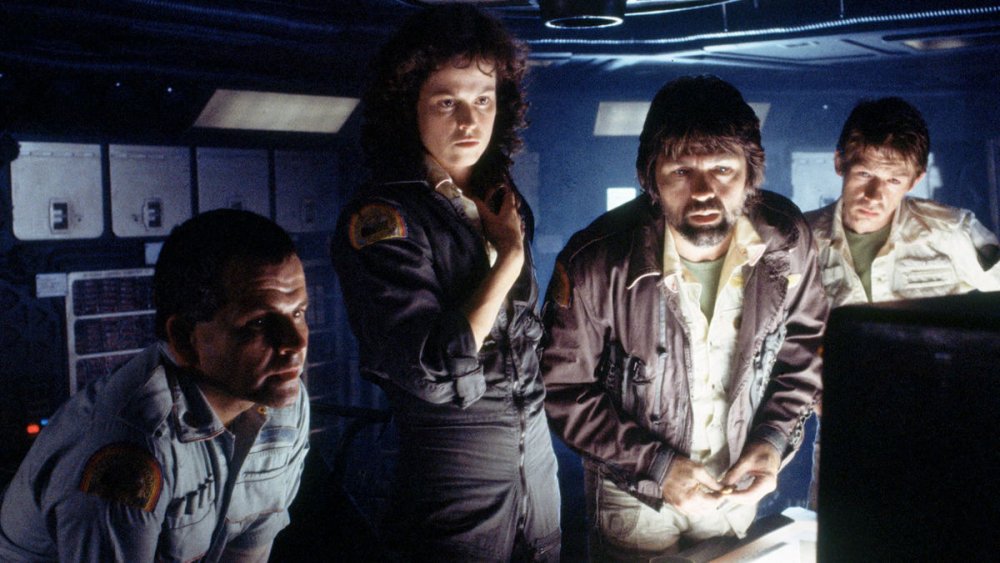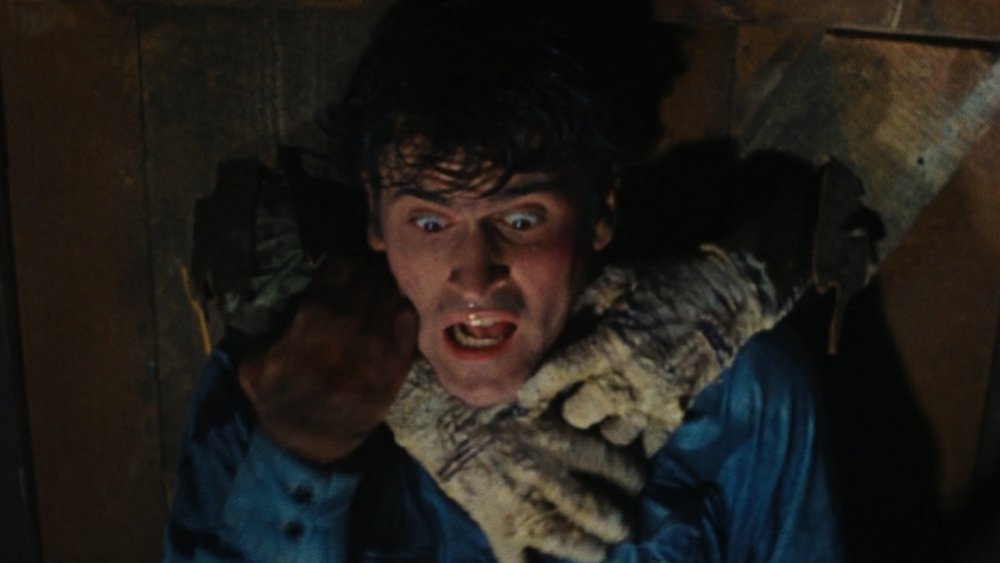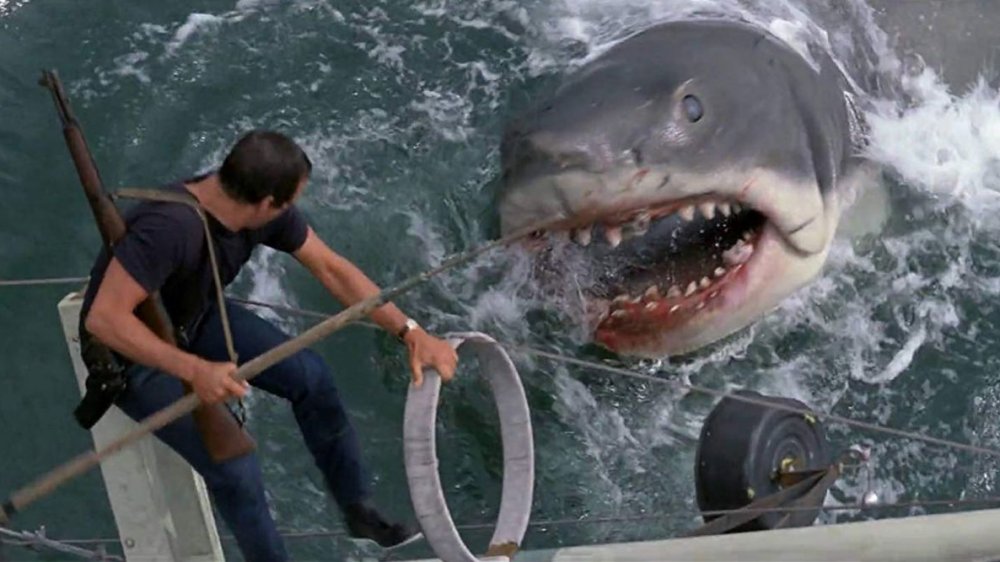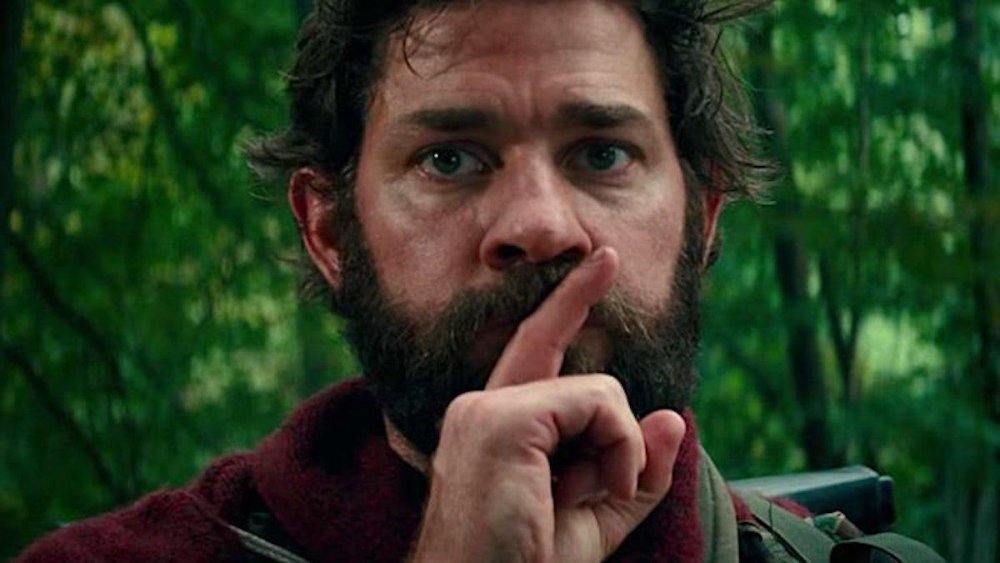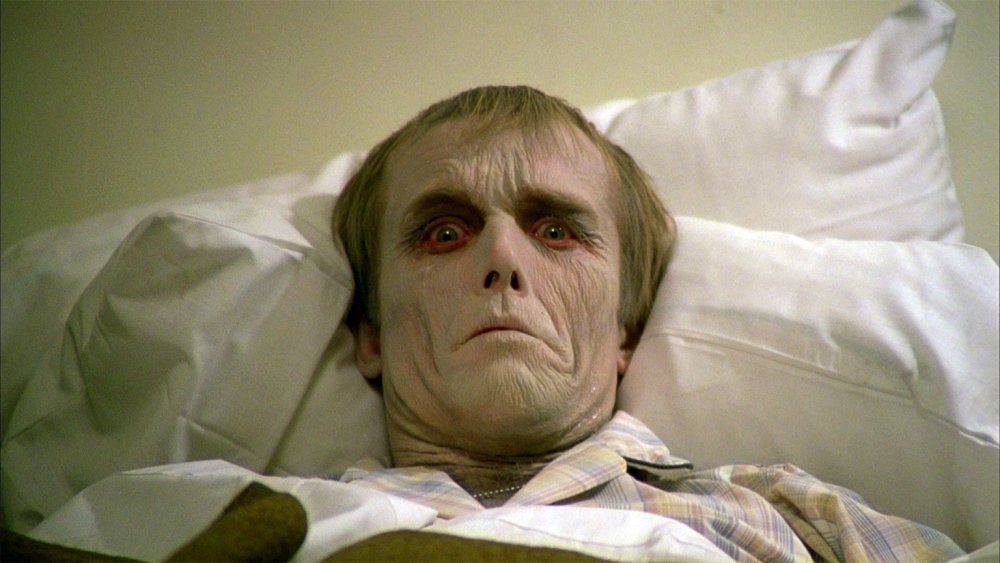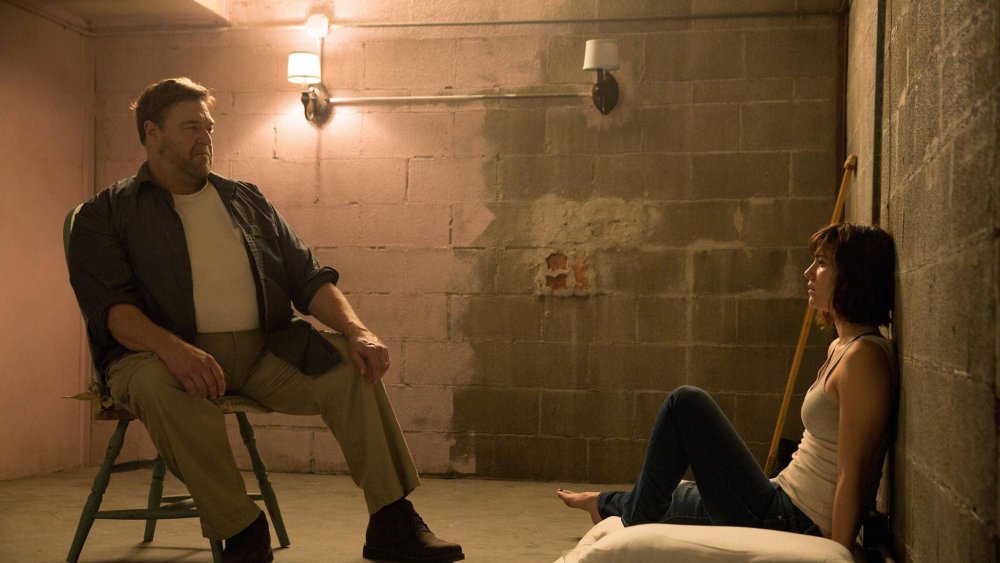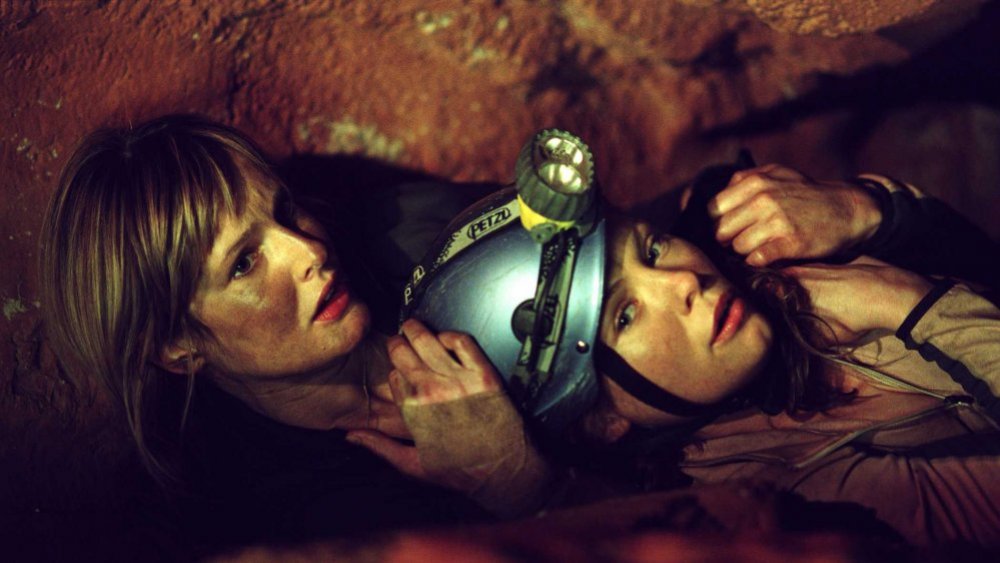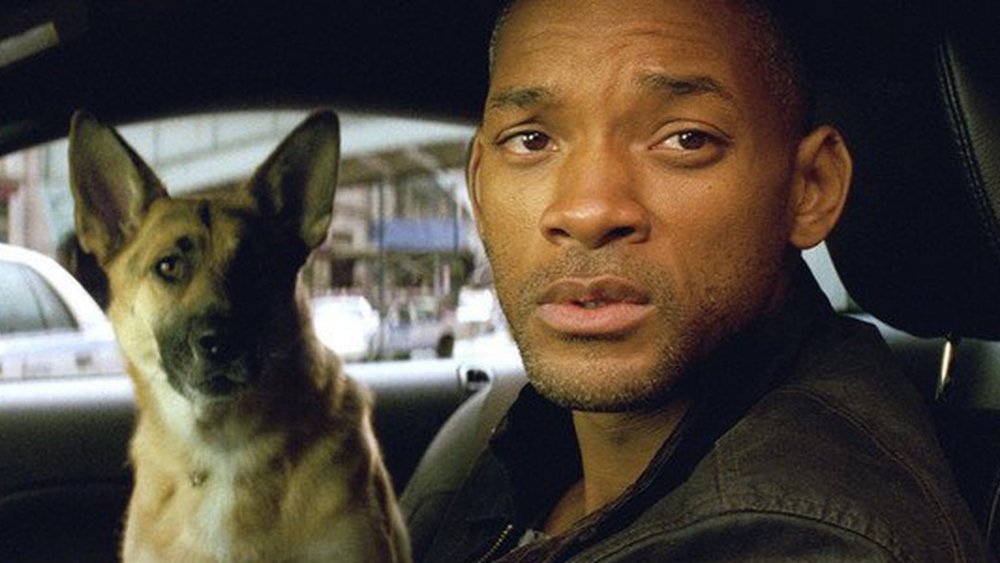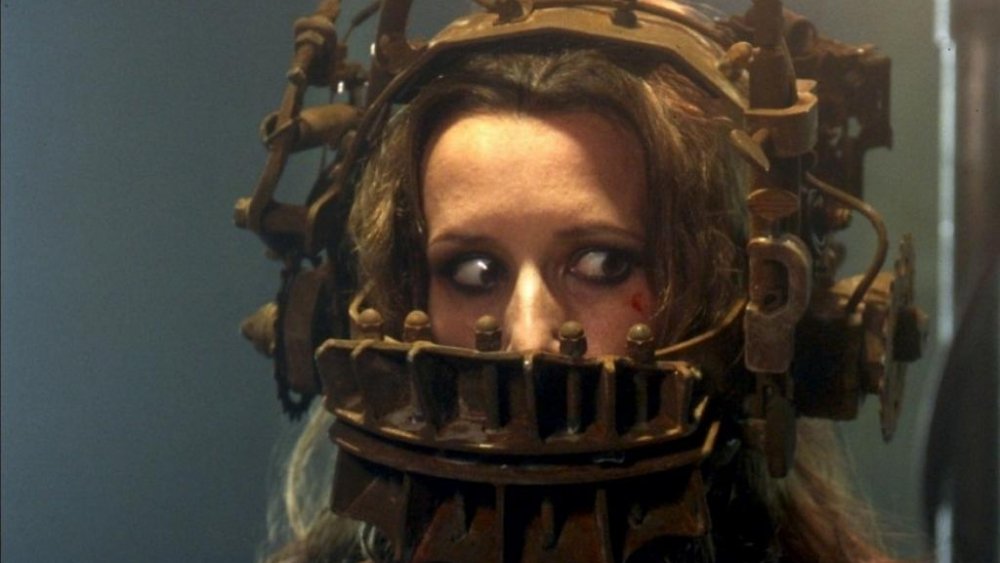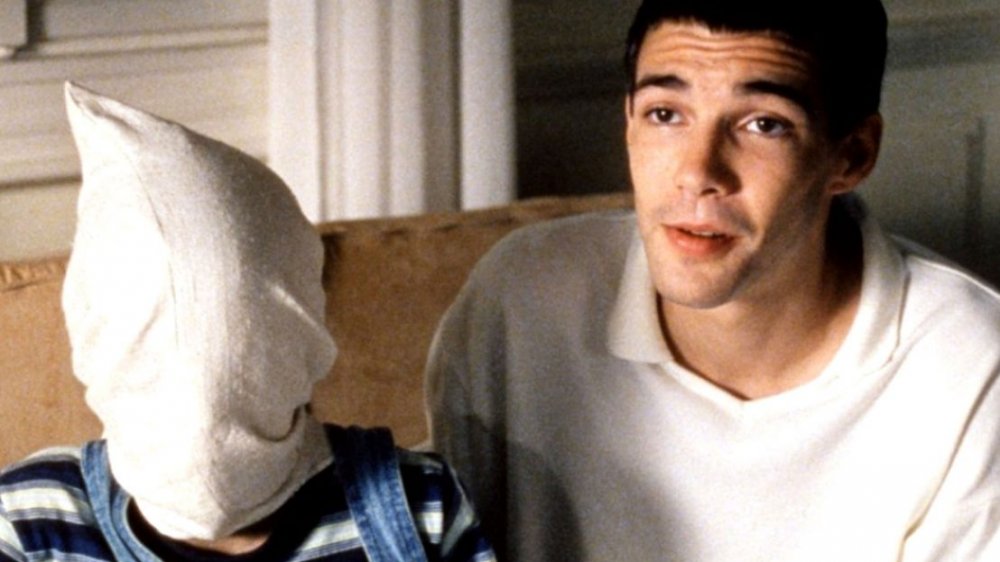The Scariest Horror Movies About Isolation
What makes a horror movie so horrifying? Is it the gore? The jump scares? The feeling that a demon might be lurking in the shadows? Or is it something even creepier and a little more relatable?
If you look at the best of the best horror films, you'll often find a similar theme in all of them — isolation. That sense of being by yourself, cut off from the world, alone with just your fears and possibly a murderous monster, is absolutely terrifying. It's the reason we're scared of the dark and freaked out by staying in a strange house by ourselves. Being alone is scary, and that's something horror filmmakers have known for quite a while.
So today, we're taking a look at all the frightening flicks that use this trope. These are the films that make us feel claustrophobic, separated from friends and family, and desperately wishing someone would come save us. From tales of extra-terrestrial invaders to messed up monster movies, these are the scariest horror films about isolation.
The Thing is a horror movie all about dread and isolation
What makes isolation even worse? Being trapped in it without knowing which of your fellow trapees could potentially be a murderous shapeshifting creature from another world. This is exactly the premise of 1982's The Thing, one of director John Carpenter's best movies.
Starring Kurt Russell in one of his coolest roles in a long career filled with cool roles, The Thing is about an American research team in Antarctica that stumbles upon an unknown creature at the scene of a massacre at a nearby base. Presuming that said creature is dead, they bring it back to their own lab for testing, only to find that it's very much alive and has the ability to assume the appearance of any one who comes in contact with it. Not only that, but when exposed, it becomes terrifyingly, gore-splashingly violent.
As far as isolated settings go, this is about as remote as it gets. Not only are our protagonists cut off from civilization by their location and not only is outside communication severed by a storm, but they're isolated from one another because they have no way of knowing who is and isn't "a thing." It's even implied that those who are infected don't necessarily know it, meaning that in a way, they're isolated from the truth of their own identities. It's incredibly eerie stuff, and with its icy terrain, ominous score, and top-notch acting, The Thing will make you feel very claustrophobic.
The Shining will make you go a little mad
It starts with a long shot of a car driving deep into the remote wilderness. Soon, we learn that the car contains a family that will be spending the winter alone in a secluded hotel that would be creepy even if it wasn't supernatural. What could go wrong?
Lots. Lots goes wrong.
Directed by Stanley Kubrick and starring Jack Nicholson, 1980's The Shining isn't just one of the greatest isolation horror movies of all time, it's widely considered one of the greatest films of all time, period. It tells the story of the Torrance family as they deal with their increasingly insane father, a son with a mysterious power, and a hotel that seems hell-bent on killing them all.
Adapted from a novel by Stephen King, The Shining is a masterpiece of suspense, building to its conclusion at pace that's nothing short of nerve-wracking. The acting is phenomenal, the visuals as beautiful as they are horrifying, and its themes and implications are so complex that it has inspired a slew of fan theories ranging from plausible to flat-out nuts. But most importantly, the movie makes it feel like the walls are closing in on you, and by the end of The Shining, you might feel just as crazy as ol' Jack Torrance.
In Alien, no one can hear you scream
While 1979's Alien treads the line between horror and sci-fi, there's no doubt that it's scary. In space, no one can hear you scream. It's right there in the tagline of the movie. You're all on your own, and the closest help is light years away.
Directed by Ridley Scott, the movie tells the story of the crew of a spaceship that's being stalked by a mysterious, well, alien that picks them off one by one. Pretty soon, it's just down to the titular creature vs. Ripley (played by the great Sigourney Weaver) as she wages a battle for survival that launches one of the greatest film franchises ever made.
One of the most frightening aspects of Alien is how it so effectively increases the sense of isolation as the story moves along. While it begins with the crew being isolated in the darkness of space, at least they still have each other. But as they're killed off in gruesome, creepy ways, that sense of isolation grows as their numbers dwindle. Finally, Ripley not only has to face the alien alone, but she does so in a lifeboat separated from the main ship, even further adrift and isolated.
In fact, isolation is so integral to the movie that in 2014, a video game spinoff was released entitled Alien: Isolation.
The Evil Dead is the ultimate 'cabin in the woods' horror movie
A bunch of young people getting randy at a cabin in the woods — it's such a typical horror-flick trope that it spawned a semi-parody movie called, aptly, The Cabin in the Woods. But we're not here to talk about that. We're here to discuss one of its primary inspirations, The Evil Dead.
The 1981 directorial debut by genre favorite Sam Raimi, The Evil Dead has a story that's straightforward enough. A handful of friends head out to the middle of nowhere and end up being attacked by undead demons. Where the movie sets itself apart from the crowd of lookalikes and copycats is in the fact that it so perfectly blends scares, gore, humor, and surrealism.
You can really feel the sense of isolation as the central character Ash has his friends picked off, eventually leaving him alone to sink steadily into a laughing, crying madness. That atmosphere of isolation is deepened even further each time he's forced to delve into the dark and decidedly creepy basement.
The sequels Evil Dead 2 and Army of Darkness continue to toy with the concept of isolation. In the former, we essentially have what amounts to a remake of the original that some fans have hailed as an improvement. In the case of the latter, our hero Ash finds himself transported back to the Middle Ages, where he's in a sense isolated by his rather extreme "fish out of water" scenario.
In Jaws, the heroes find themselves isolated ... with a man-eating fish
In 1975, Steven Spielberg released a film that set the standard for edge-of-your-seat blockbusters. The premise of Jaws is extremely simple. A New England island is terrorized by a shark. What makes the movie interesting — besides its tremendous scares, masterful directing, and pitch-perfect acting — is how the various humans harassed by said shark react to the threat.
While at first glance Jaws might not seem like it centers around isolation — several key scenes do take place on a crowded beach, after all — it's impossible to deny that the theme is central to its narrative. Consider, for example, that the first kill comes when a girl finds herself separated from her friends, swimming all alone. Then there's each frightening time Richard Dreyfuss' Matt Hooper is forced to dive underwater.
But the concept of isolation is most central to the entirety of the third-act, where the three central characters give chase to the shark upon a tiny fishing boat. This is when we come to realize that isolation has been at the core of the story all along. While they were previously part of a larger population on an island, now they're three men alone on an even smaller island (in this case, a boat). And as we learn, each man is an island unto himself. Then in the final climatic moment when Chief Brody (Roy Scheider) faces off against the shark once and for all, he finds himself alone at the apex of a sinking ship.
Isolation is a terrifying theme in A Quiet Place
Just a few years ago, if you had told us that Jim from The Office was going to release one of the greatest horror flicks of the decade, we would've been skeptical to say the least. But then in 2018, John Krasinski's terrifying A Quiet Place hit the big screen, so here we are.
Set just after a society-smashing apocalypse brought on by extraterrestrial monsters with no sight but incredible hearing, A Quiet Place follows the Abbott family as they attempt to survive, create some semblance of a stable life, and overcome the loss of their infant son/brother. The family establishes itself on a remote farm where they eek out a silent living, all the while worrying that one of them will make a sound, thereby alerting the creatures to their presence. The thing is, the mother of the family is pregnant and nearing her due date, and as we all know, babies aren't exactly renowned for their ability to keep quiet.
A Quiet Place was a huge success, proving to audiences that Krasinski could scare the crap out of us. Part of the movie's frightening power comes from the fact that its characters are so isolated. They're cut off geographically by their remote farm life, interpersonally by the fact that they can't speak or even cry out for help, and in the case of daughter Regan, by her deafness which further isolates her from the rest of her family.
Dawn of the Dead pits a band of survivors against the entire world
There are a lot of great zombie movies out there that deliver abundant scares, but if you had to choose one that stood out from the crowd, the original Dawn of the Dead would certainly be in the running. Directed by zombie and horror king George Romero, this 1978 classic helped to set the standard for undead, brain-gobbling greatness.
The second installment in Romero's Living Dead series, Dawn of the Dead is set shortly after zombies have first risen from the grave. We follow a handful of survivors who hole up in a mall hoping to find safety and supplies, and we watch as their situation goes from reasonably good (at least when you consider that the world has descended into a zombie hellscape) to disastrously bad.
Dawn of the Dead sees our protagonists isolated from whatever society might still exist by the fact that they're essentially trapped in a mall. While this isolation at first seems somewhat welcome thanks to their relative comfort, it slowly loses its charm as the reality of their situation sets in. Ironically, it's when their isolation comes to an end as still-living outsiders impose themselves that what little safety they have collapses entirely. While in most of the entries on this list the isolation adds to the terror, in Dawn of the Dead, it seems to be their only hope for survival.
We think we're alone now in 10 Cloverfield Lane
Released in 2016, the delightfully eerie 10 Cloverfield Lane follows a young woman (Mary Elizabeth Winstead) who wakes after an accident to find that she's locked in some sort of bomb shelter built by a somewhat intense but seemingly alright doomsday prepper (played by the scene-stealing John Goodman). Said prepper informs her that the outside world has been devastated by an unknown disaster, saying that he rescued her following her accident and that she'll only remain safe as long as she stays in his bunker. Predictably, things are not what they seem.
The whole concept of 10 Cloverfield Lane hinges on isolation. Presumably, hiding in the bunker is the only thing that will keep those within it safe, but isolation is also the tool that Goodman's Howard Stambler most needs to maintain his secret. Hitting this thematic nail on the head is the (frankly awesome) use of the classic 1967 hit "I Think We're Alone Now" by Tommy James & the Shondells. Along with that incredible musical choice, the set feels incredibly tiny. There's barely any room to move in Howard's bunker, and as the situation escalates, the sense of tension and isolation just build and build, all while our hero has to decide whether to hunker down or take her chances outside.
The Descent is an incredibly claustrophobic horror flick
Have you ever considered the idea of spelunking into a cave, only to look into its dark, mysterious void and decide that your time might be better spent above ground? We don't blame you because we've seen The Descent.
Released in 2005, The Descent tells the story of a group of women who go on a caving trip in order to bond after a tragic accident. Things turn bad fast when a collapse closes off the exit, and they realize that they're cut off and no help is forthcoming because they've ended up in an unknown cave system with no one on the outside aware of their location. Their only hope is to look for another way out, but as they begin to search for it, they quickly discover that they're not alone, and that whatever is in the cave with them is hungry.
The Descent was widely hailed for its frights, with The New York Times declaring it "one of the better horror entertainments of the last few years" thanks to its feverish acting, scary monsters, and claustrophobic setting. That sense of claustrophobic isolation narrows more and more as the movie progresses, and by the end, the main character is all on her own, dragging herself through an ever-constricting crack.
Isolation indeed. The Descent portrays the next closest thing to being buried alive.
A classic novel inspired three creepy tales of isolation
Imagine this scenario. You're seemingly the last person alive — or at least the last one who hasn't turned into some ghoulish creature — and you spend your days wandering the city gathering food and supplies, all the while keeping an eye on the sun lest it sets before you have a chance to retire back to your fortified home ... because at night, the creatures hunt. It's just you against them in an empty world.
If this premise sounds familiar, it's because it's been put to screen three times — first in 1964 as The Last Man on Earth, starring Vincent Price; second in 1971 as The Omega Man, starring Charlton Heston; then most recently in 2007 as I Am Legend, starring Will Smith.
All of these movies were based on Richard Matheson's novel, I Am Legend, and each one differs slightly. They all have their positive and negative aspects, but one thing rings true through them all — the concept is pretty freaky. Consider the fact that the protagonist from each film is not only alone, but he's forced to live in an essentially abandoned city, and he's constantly reminded of the people who are gone, and he's constantly afraid of the dark. Talk about a creepy, sad existence.
Saw is all about being trapped and afraid
In yesteryear, they would've been referred to as "splatter" flicks. More recently they've been deemed "torture porn." Whatever you call this brutal genre, the Saw series arguably represents its gory peak. For our purposes here we're focusing on the first installment. When Saw hit the big screen back in 2004, it genuinely horrified audiences with its relentlessly cruel, bloody depictions of violence.
The story is deceptively simple. Two men awaken in a disgusting bathroom, each chained at opposing sides of the room, a dead body on the floor between them. A tape recorder informs them that they now must do whatever possible to escape, but that if one of the men doesn't kill the other, his family will be murdered. From there, a struggle to survive and to kill ensues, and through a series of flashbacks, we learn how these men ended up in this mess.
Besides the gruesome violence, part of what makes Saw — and indeed, the whole franchise — so unsettling involves is that the characters caught in the killer's trap find themselves in an isolated location, cut off from any form of outside help. Worse still, the victims who are trapped together are isolated from one another by their individual motivations to survive at all costs. These aren't teammates working together to overcome the odds, but they're instead people reduced to isolated animals who will do anything to save as much of their own skin as possible.
Funny Games is about everything that can go wrong during vacation
There are a lot of stomach-churning horror movies out there, but Funny Games just might be the stomach-churniest. Whether we're talking about the original 1997 Austrian version or the 2008 shot-for-shot remake in English, the story is the same. Both were made by the same director (Michael Haneke), only the second one was updated with famous actors so that the whole world could experience the genuinely difficult to watch tale.
In Funny Games, a family goes on vacation to a remote house where they're taken captive by two young men who proceed to brutally torture them, seemingly for no reason at all. And we do mean brutally. It's not fun to watch, and in fact, it's an exercise in seeing how far the audience is willing to go. By continuing to watch the horrific violence, the theory goes, we are complicit in it.
One of the main reasons this movie is so frightening involves its isolated setting. It's hard to image anything more horrible than going out into the rural pleasantness of nature with your loved ones, only to then experience senseless, nightmarish acts of violence. It's unpleasant at best and horrifying at worst, and it's just about enough to make you cancel your vacation plans.
